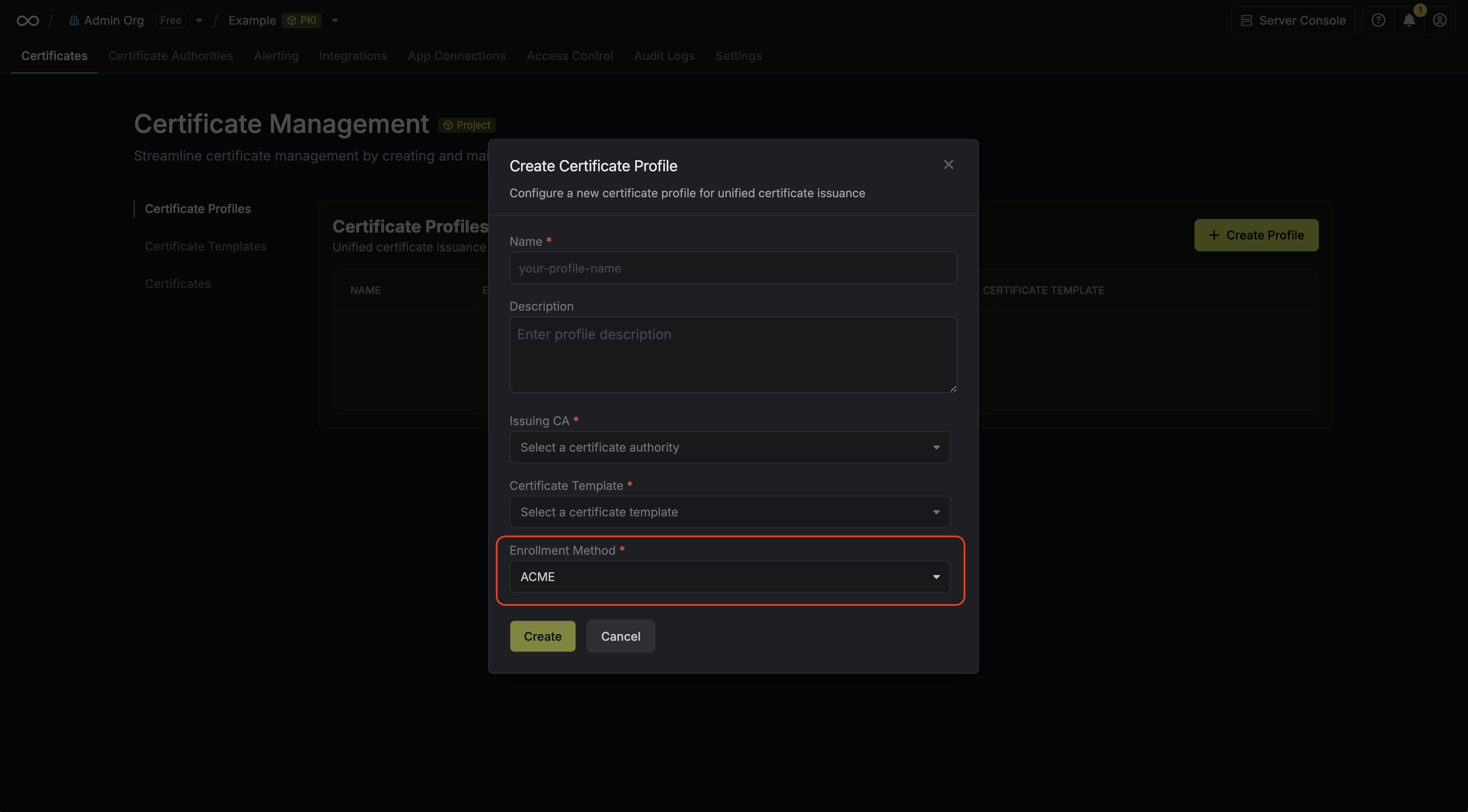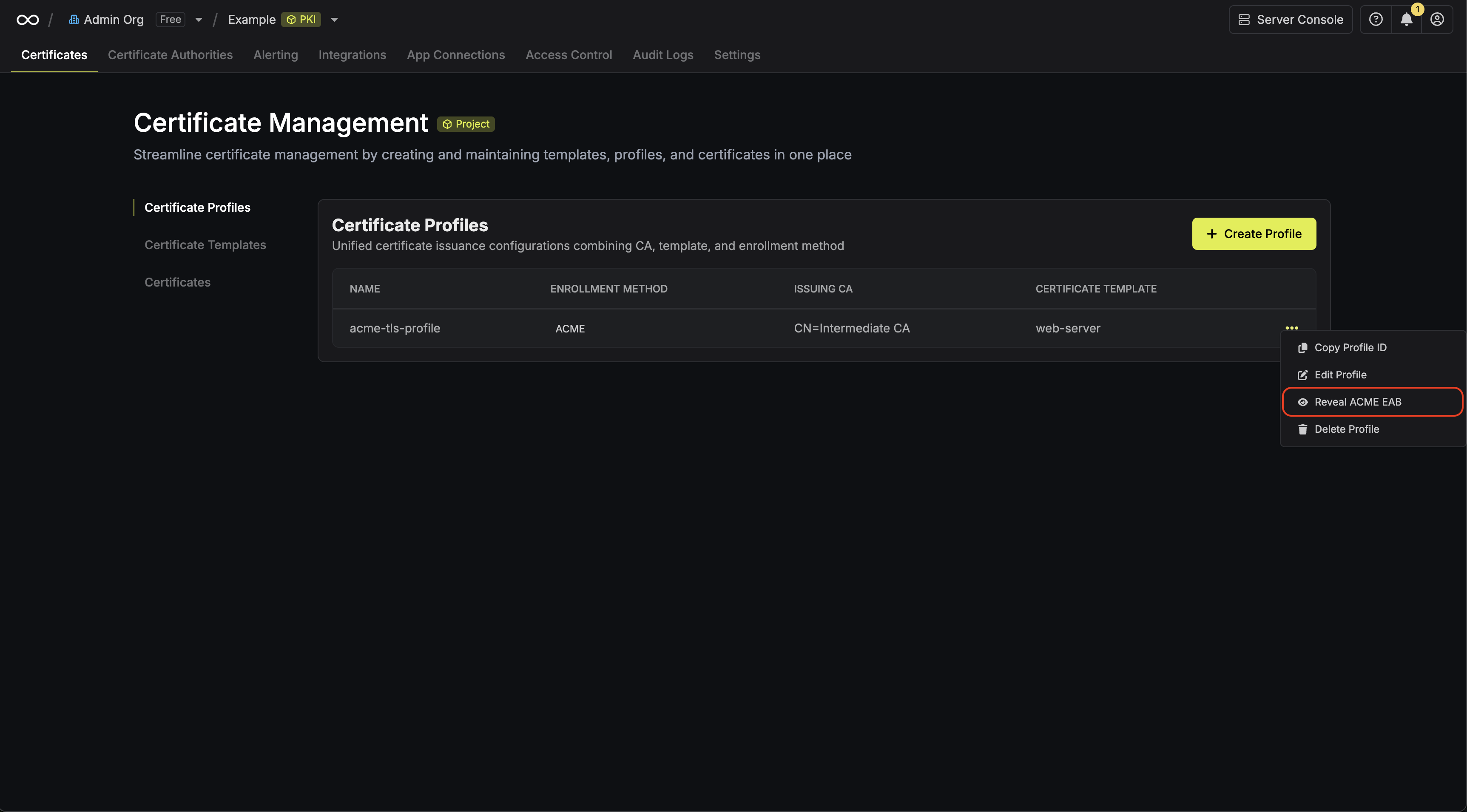Concept
The ACME enrollment method allows you to issue and manage certificates against a specific certificate profile using the ACME protocol. This method is suitable for web servers, load balancers, and other general-purpose servers that can run an ACME client for automated certificate management. Infisical’s ACME enrollment method is based on RFC 8555.Prerequisites
Install an ACME client onto your server. This client will handle ACME challenges and request/renew certificates from Infisical.Guide to Certificate Enrollment via ACME
In the following steps, we explore how to issue a X.509 certificate using the ACME enrollment method.1
Create a certificate profile in Infisical
Create a certificate
profile with ACME
selected as the enrollment method.

2
Obtain the ACME configuration
Once you’ve created the certificate profile, you can obtain its ACME configuration details by clicking the Reveal ACME EAB option on the profile. From the ACME configuration, gather the following values:
From the ACME configuration, gather the following values:
 From the ACME configuration, gather the following values:
From the ACME configuration, gather the following values:- ACME Directory URL: The URL that the ACME client will use to communicate with Infisical’s ACME server.
- EAB Key Identifier (KID): A unique identifier that tells Infisical which ACME account is making the request.
- EAB Secret: A secret key that authenticates your ACME client with Infisical.
3
Configure your ACME client
Provide the ACME Directory URL, EAB KID, and EAB Secret from Step 2 to your ACME client to authenticate with Infisical and request a certificate.For example, if using Certbot as an ACME client, you can configure and start requesting certificates with the following command:Certbot stores the private key and resulting leaf certificate and full certificate chain in
/etc/letsencrypt/live/{domain-name}/.For client-specific setup and usage instructions, refer to the documentation for your ACME client.
